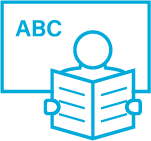The present study presents a review of work on the development of children’s and adolescents’ expectancy and competence beliefs of academic achievement domains across the elementary and secondary school years and how these are calibrated to their performance. Expectancy and competence beliefs for different achievement tasks decline as children move from kindergarten through to 12th grade. With age, children’s expectancy beliefs relate more strongly to their performance in achievement-related activities, which impact motivation and self-regulation for exams.
Authors: Katherine Muenks, Allan Wigfield, & Jacquelynne S. Eccles
Source: Muenks, K., Wigfield, A., & Eccles, J.S. (2018). I can do this! The development and calibration of children’s expectations for success and competence beliefs. Developmental Review, 48, 24-39. https://doi.org/10.1016/j.dr.2018.04.001
The present study presents a review of work on the development of children’s and adolescents’ expectancy and competence beliefs of academic achievement domains across the elementary and secondary school years and how these are calibrated to their performance. The work reviewed stems from prominent achievement motivation theories: expectancy-value theory, social cognitive theory, self-worth theory, and self-determination theory. Expectancy and competence beliefs for different achievement tasks decline as children move from kindergarten through to 12th grade. With age, children’s expectancy beliefs relate more strongly to their performance in achievement-related activities, which impact motivation and self-regulation for exams.
- Constructs of expectancies for success and broader competence beliefs have a long history in the achievement motivation field.
Expectancy-value theory
- Atkinson (1957, 1964) developed this theory to explain different achievement-related behaviours, such as striving for success, choice among achievement tasks, and persistence.
- Individual achievement behaviours are determined by achievement motives, expectancies for success, and incentive values.
- Expectancies for success refers to children’s beliefs about how well they will perform on upcoming tasks.
- Beliefs about competence or ability refer to children’s evaluations of their competence in different knowledge areas.
Social cognitive theory
- Bandura (1977, 1986, 1997) emphasised human agency and perceptions of efficacy as major determinants of individuals’ efforts to achieve.
- Self-efficacy is a multidimensional construct that can vary in strength, generality, and level of difficulty.
- Outcome expectations are beliefs that certain behaviours will lead to certain outcomes.
- Efficacy expectations are beliefs about ability to perform the behaviours necessary to produce the outcome. These are the major determinants of goal setting, activity choice, willingness to expend effort, and persistence.
- Self-efficacy is determined by previous performance, vicarious learning, verbal encouragement by others, and physiological reactions.
Self-concept and self-worth theories
- Self-concept is defined in terms of competence beliefs.
- Self-worth is defined as an overall sense of value as a person.
- Children who do less well than their peers are most at risk for losing self-worth and can develop strategies such as not trying or procrastinating to protect their sense of competence.
Effectance motivation and self-determination theory
- Effectance motivation (White, 1959) refers to the drive to engage in exploratory and mastery behaviours even when basic bodily needs are fully sated (as demonstrated by species from rats to humans).
- This theory states that the goals are to acquire competence and to influence one’s environment.
- Deci and Ryan’s (1985, 2000, 2016) self-determination theory focuses particularly on the role of autonomy and intrinsic motivation within development.
- Self-determination theory states that intrinsic motivation is only possible when individuals freely choose their own actions.
- Self-determination theory states that competence, autonomy, and relatedness are fundamental human psychological needs.
Development of expectancy beliefs
- Children aged 2.5–3.5 years start to show self-evaluative, non-verbal expressions following a successful or unsuccessful action.
- Developmental progression occurs between the ages of 5 and 12 years in relation to beliefs about ability, effort, and performance: at ages 5–6 years, effort, ability, and performance are not clearly differentiated in terms of cause and effects; at ages 7–9 years, effort is understood to be the primary cause of performance outcomes; at ages 9–12 years, children begin to differentiate ability and effort as causes of outcomes; however, they do not always apply this distinction. Adolescents clearly differentiate ability and effort and understand the notion of ability as capacity.
- It is likely that children’s expectancies become more accurate once they are able to distinguish between effort, ability, and outcome more clearly.
- Children who believe that intelligence can continue to grow through their own efforts will persist on achievement tasks even where they may not be doing well; in contrast, children who believe that a particular ability (such as maths) reflects a stable, unchangeable entity are likely to give up when they start to experience difficulty succeeding at tasks requiring this ability.
- When individuals attribute their failures to stable, internal, and uncontrollable causes, their expectations for future success diminish and their motivation for engaging in the tasks on which they are failing reduces.
- Many young children are quite optimistic about their competencies in different areas, and this optimism changes to greater realism and (sometimes) pessimism for many children.
How are expectancy-related beliefs related to performance?
- The relationship between children’s expectancies and performance strengthen across the school years.
- Students’ ability self-concepts and value attributed to maths measured in high school could predict their college major choice.
- Students’ expectancies predict future performance even when controlling for previous performance.
- Self-concept and achievement are both mutual causes and effects.
- ‘Calibration’ is defined as the difference between students’ expected and actual performance.
- Students who are well-calibrated have accurate expectations of their performance, and students who are poorly calibrated over- or under-estimate their level of performance; thus, calibration can affect students’ motivation, study behaviour, and achievement.
- Personal, environmental, and social factors can influence students’ calibration accuracy.
- Higher-performing individuals are often better calibrators than low performers, and task- and item-level calibration accuracy decreases with more difficult tasks.
- Parents, teachers, and peers can influence students’ domain- and task-level calibration.
- Students’ calibration accuracy has important consequences for their well-being, motivation, self-regulation, effort, and performance.
How do parents influence their children’s beliefs?
- Parents can directly communicate their own beliefs to their children through criticism and praise.
- Providing children with process praise (praising effort and learning) rather than person praise (praising the child’s intellectual capacity) leads to higher motivation and perceived competence among children.
- Parents can provide opportunities for their children to become involved in various domain-specific activities, such as playing maths board games or going to science museums.
- The extent to which parents’ behaviour is autonomy-supportive (providing some structure but allowing children to explore their environment and make mistakes) versus controlling (exerting external pressure to lead children toward certain behaviours) can influence the development of children’s own competence beliefs.
How do teachers influence children’s beliefs?
- When children start school, they begin to be evaluated by their teachers in systematic, formal, and normative ways. Partly as a result of this evaluation, they start to engage more systematically in social comparison with peers as way of judging their own abilities.
- Teachers’ general expectations for their students’ performance and teaching efficacy (confidence in their ability to influence their students through their teaching) predict students’ school achievement.
- Teachers who feel they are able to reach even the most difficult students, who believe in their ability to affect students’ lives, and who believe that teachers are an important factor in determining developmental outcomes, communicate these positive expectations and beliefs to their students.
- Person-specific expectations may be one of the most direct social influences on students’ developing expectancy beliefs.
- Teachers’ expectations for individual students are directly related to how well the student has achieved in the past; what is critical is how these perceptions translate into the teachers’ actual behavioural interactions with each of the students.
- During elementary school, students are often grouped by ability within classrooms for instruction in subjects such as reading and maths. In middle school and high school, between-classroom ability grouping or tracking is used more commonly, particularly in certain countries.
- It is believed that learners will be more motivated to learn if the material can be adapted to their current level of competence. The results for students placed in low ability and non-college tracks do not confirm this hypothesis.
- One important concern about ability grouping is to determine the relevant social comparison group for particular students.
How do peers influence children’s beliefs?
- Peers have a major impact on children’s development of expectancy-related beliefs and motivation more generally.
- As children go through school, they increasingly choose to spend time with other children they perceive as similar to themselves.
- Peer groups can operate as ‘normative contexts’ that influence how members of the group behave.
- Peer groups have norms for their expectancies for school achievement and effort; such norms were one of the markers that differentiated the groups in this study.
Interventions to foster students’ expectancy-related beliefs
- Attribution retraining generally involves changing individuals’ failure attribution from a belief that failure is due to a lack of ability to lack of effort. The aim is to improve students’ task persistence and performance.
- Telling children to ‘try harder’ without providing specific strategies designed to improve performance may be unsuccessful if children increase their efforts and still do not succeed. Thus, combining strategy and attribution retraining provides greater success.
- Students’ mindsets can be changed from fixed to growing by emphasising how their brains grow and change through learning. This can lead them to revise their beliefs about intelligence.
- Self-efficacy training generally involves providing students with feedback to enhance their self-efficacy, as well as giving them some skill training so they can master the tasks they undertake.



